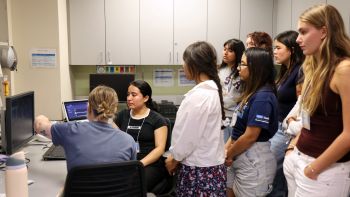Last week, the Conrad N. Hilton Foundation held its annual Substance Use Prevention Convening in Santa Monica, bringing together dozens of leaders from nonprofits, government agencies, and hospitals dedicated to addressing adolescent alcohol and drug use.
One of the groups represented was Mentor Foundation USA, based in Virginia. Their Living the Example (LTE) program works like this: about 20 high school students are recruited from a school to act as youth ambassadors in preventing alcohol and drug use among their peers. The ambassadors receive a six-week training on branding, boosting online engagement, and advocacy, and then create their own social media messaging campaign around healthy living and substance use prevention.
The ambassadors are then giving a stipend and guidance to plan and execute a school-wide “change project” at their school. Some of the projects have included music videos, community walks, or basketball games.
Peers promoting substance use prevention
The results of a pilot study on LTE indicated that the program reduced the intention to use substances including alcohol, marijuana, and opioids among the students who received the messages. A larger follow-up study is pending publication.
What’s so exciting about the LTE program is that it showcases some of the important factors in healthy adolescent development, including the positive potential of peer influence and the ability for adolescents to make meaningful contributions. Even more, it’s a fantastic example of how social media can have a positive effect on shaping norms around health behavior. As we’ve seen from teens organizing around Black Lives Matter, gun violence, and climate change, young people’s facility with digital technology is an enormous power that they can wield for good.
Adolescent advocacy and leadership
There are a lot of factors that impact adolescent substance use, including access, personal and family stress, and peer pressure. The LTE program is a reminder that adolescents themselves can be advocates for healthy development, and a potent part of the solution.
You can read more about how adolescents and their communities benefit when young people have a chance to contribute.



